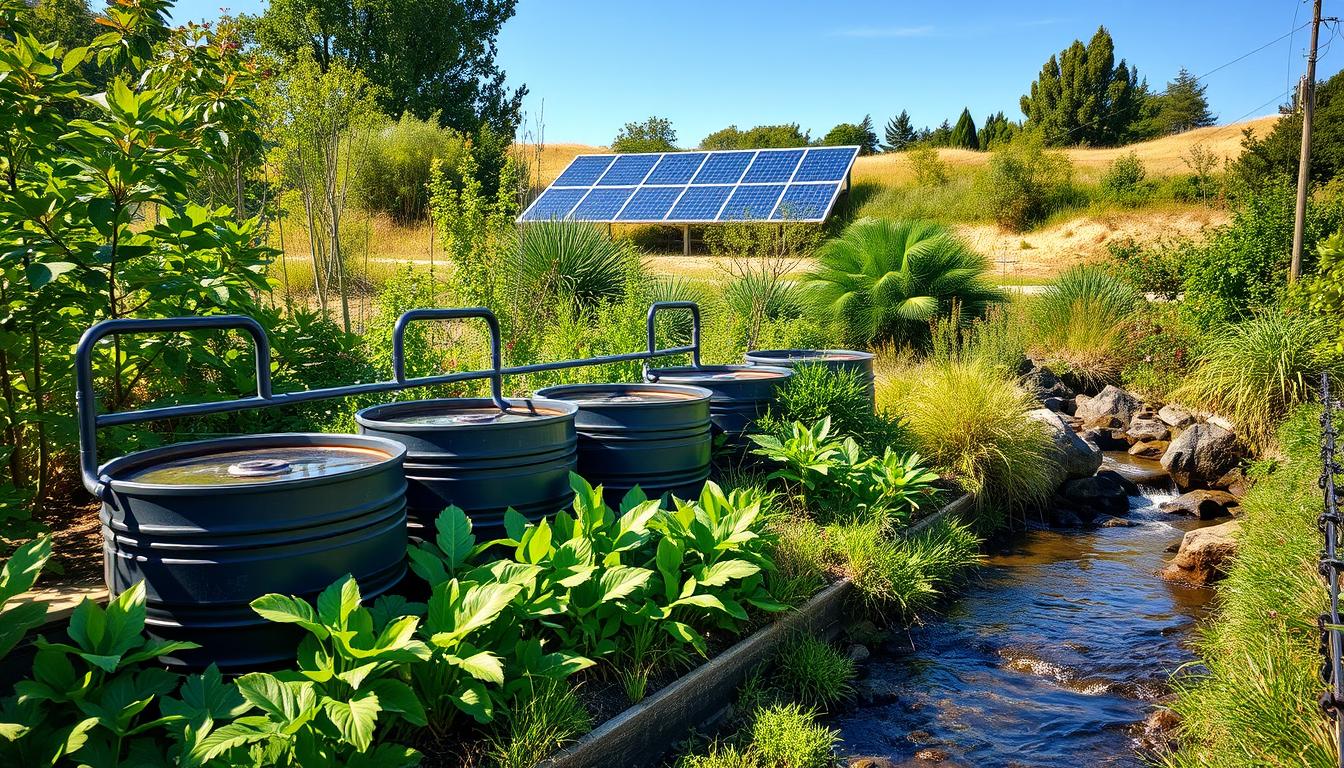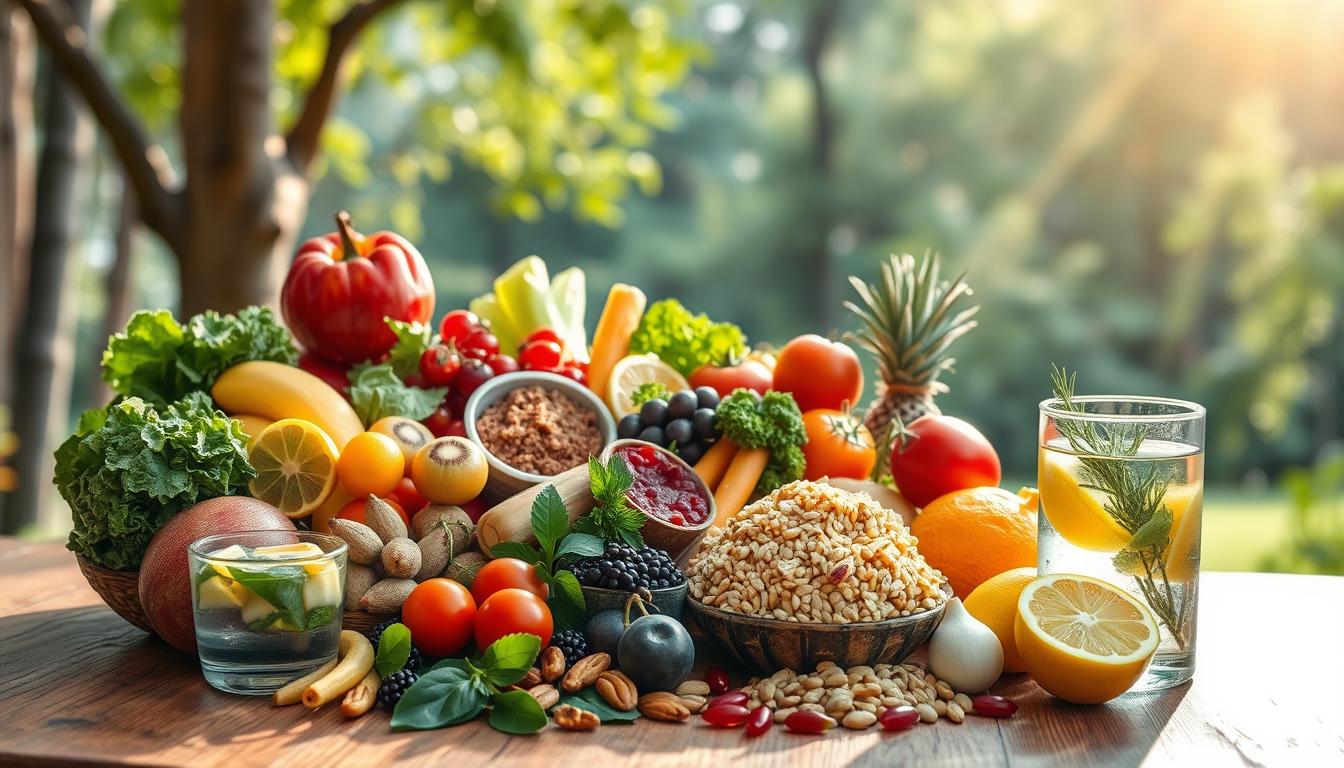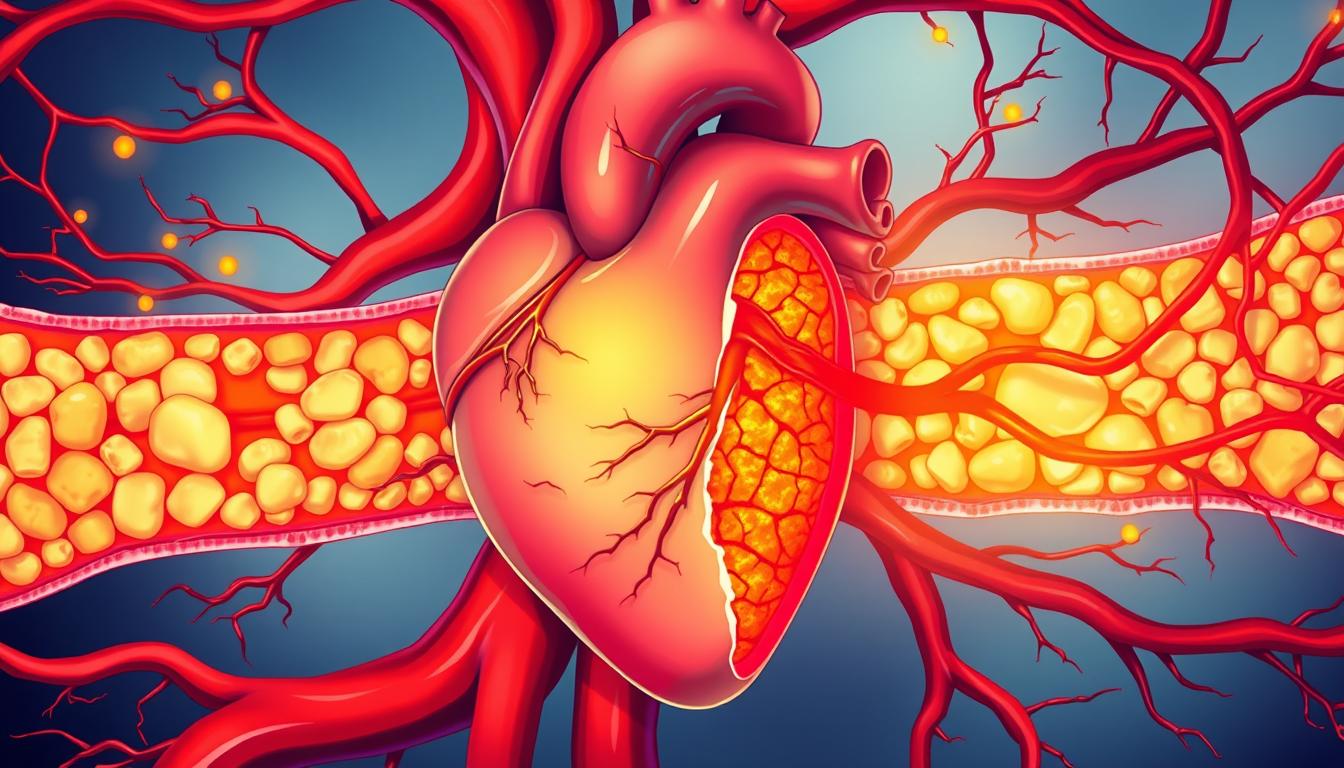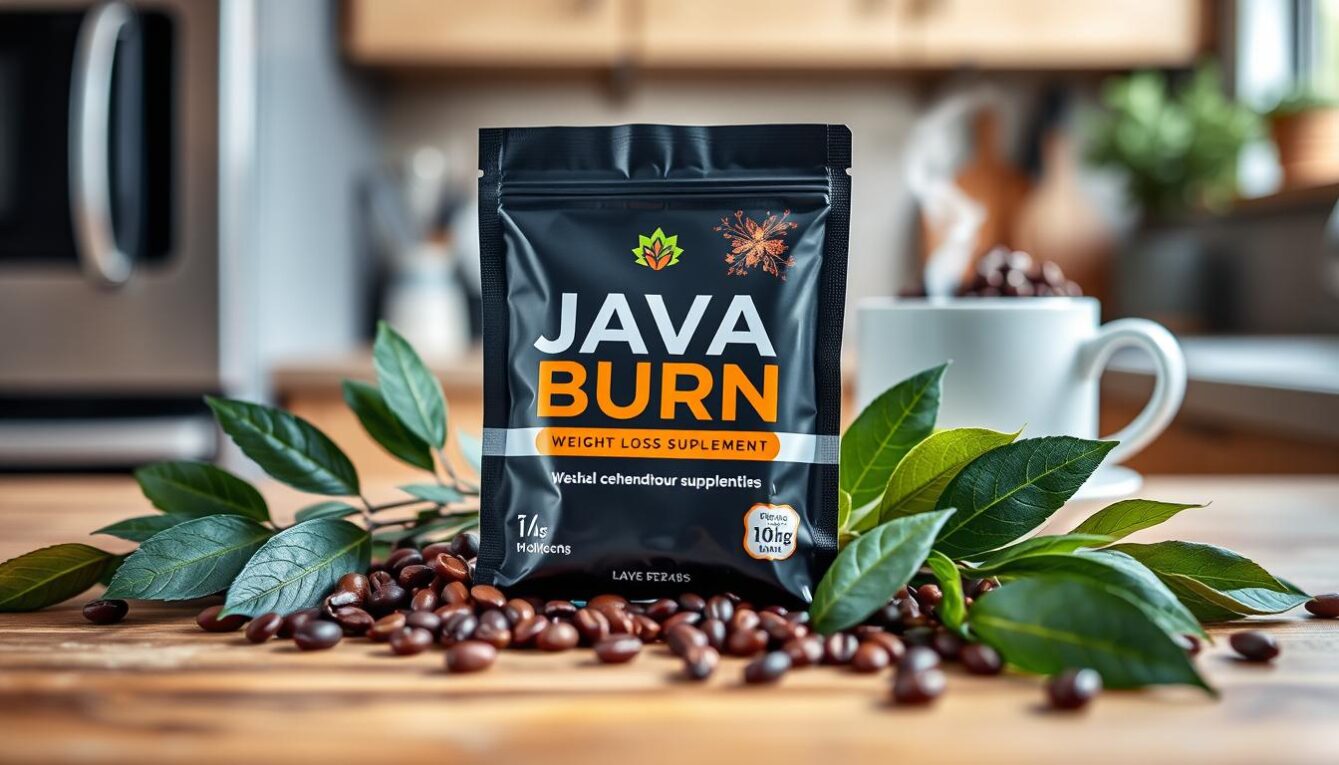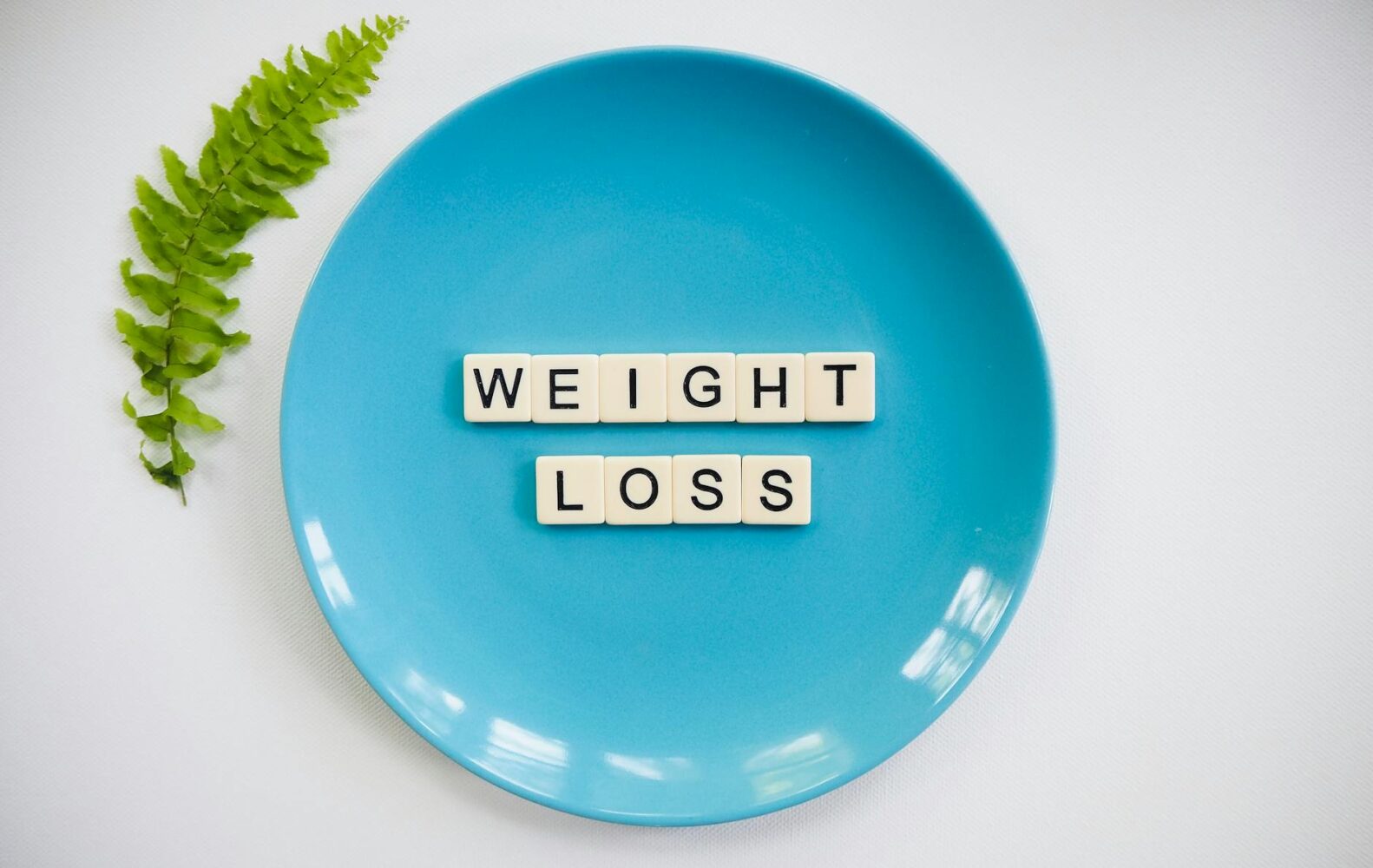As a responsible pet owner, making sure your dog eats right is key to their health. This guide will give you the best tips on feeding your dog. It will help them stay healthy, happy, and full of life.

Key Takeaways
- Understand the importance of a balanced diet for your dog’s optimal health
- Learn how to choose high-quality dog food to meet your pet’s nutritional needs
- Discover the significance of portion control and establish consistent feeding schedules
- Explore healthy treat options and the importance of moderation
- Identify and address potential food allergies or sensitivities in your dog
The Importance of a Balanced Diet
Feeding your dog a balanced diet is key for their health and happiness. Dogs need the right mix of proteins, fats, carbs, vitamins, and minerals. This mix supports their dog nutrition and dog health.
Nutrients for Optimal Health
Dogs need many nutrients to stay healthy. Good dog food should have all these nutrients. They include:
- Proteins for muscle growth and repair
- Fats for energy, skin, and coat health
- Carbohydrates for fuel and fiber
- Vitamins and minerals for immune function, bone health, and more
Choosing High-Quality Dog Food
Choosing the right dog diet is important. Pick food with whole, natural ingredients and no fillers or artificial stuff. Talking to your vet can help pick the best canine nutrition for your dog’s needs.
| Nutrient | Function | Good Sources |
|---|---|---|
| Protein | Muscle development, repair, and maintenance | Meat, eggs, fish, poultry |
| Fats | Energy, skin and coat health, hormone production | Salmon, flaxseed, vegetable oils |
| Carbohydrates | Fuel for energy, fiber for digestive health | Whole grains, fruits, vegetables |
| Vitamins and Minerals | Immune function, bone health, organ function | Leafy greens, organ meats, supplemental vitamins |
“Proper nutrition is the foundation of your dog’s overall health and well-being. Investing in a high-quality dog food can make all the difference in their energy, coat, and longevity.”
Understanding Portion Control
Keeping your dog at a healthy weight is key for their health and happiness. Proper portion control is a great way to do this. The right food amount depends on your dog’s age, how active they are, and their size.
To find the best dog portion size, follow these steps:
- Look at the feeding guide on the dog food package, which is based on your dog’s weight.
- Check your dog’s body condition and adjust their food amount as needed. You should feel their ribs easily, and their waist should be visible from above.
- Change your dog’s diet slowly, letting their body get used to it.
Feeding your dog too much can cause dog obesity. This raises the risk of health problems like joint issues, breathing troubles, and metabolic disorders. By managing your dog’s dog nutrition and dog feeding habits, you can keep them at a healthy weight. This means they’ll live a longer, happier life.
| Dog Weight | Recommended Daily Intake |
|---|---|
| 10 lbs | 1 – 1.5 cups |
| 20 lbs | 2 – 2.5 cups |
| 30 lbs | 3 – 3.5 cups |
| 40 lbs | 4 – 4.5 cups |
These are just general tips, and your dog might need something different. Talk to your vet to find the right dog portion size for your pet.
“Portion control is the key to maintaining a healthy weight for your dog. Overfeeding can lead to serious health problems, so it’s essential to follow the recommended guidelines.”
Feeding Schedules and Routines
Having a regular feeding schedule is key for your dog’s health. It helps control their eating, supports digestion, and prevents weight and stomach issues.
Establishing Consistent Mealtimes
Being consistent with your dog’s feeding times is important. Feed them at the same times every day, based on their age and how active they are. This routine makes it easier for them to digest food and keeps their appetite stable.
Accommodating Your Dog’s Age and Activity Level
- Puppies and young dogs need to eat more often because their stomachs are small. Consider feeding them three to four times a day to help them grow and develop.
- Adult dogs do well with a twice-daily feeding schedule, with meals spread out during the day.
- Older dogs and less active dogs might do better with a single, larger meal per day because they have slower metabolisms and need less energy.
It’s crucial to talk to your vet to find the best dog feeding schedule, dog feeding routine, and dog feeding frequency for your dog’s needs. This ensures they get the right dog nutrition and dog care.
Feeding Your Dog: A Step-by-Step Guide
Feeding your dog right is key for their health and happiness. It’s important for pet owners to know the best way to feed their dogs. This guide will help you make sure your dog gets the right food.
Start by picking a special spot for your dog to eat. This area should be quiet and free from distractions. Put your dog’s food and water bowls there for meals.
- Find out how much food your dog needs based on their age, size, and how active they are. Use the food package’s guidelines and adjust as your dog’s needs change.
- Put the food in a clean bowl that won’t slip. Make sure it’s at room temperature for the best taste.
- Watch how your dog eats. Let them finish their meal in 20-30 minutes, then take away any leftovers. This stops them from eating too much and keeps their eating schedule regular.
- Always have fresh, clean water out for your dog. Fill the bowl as needed during the day.
Being consistent with your dog’s meals is important. Stick to a set schedule and don’t give in to begging or human food. This can mess up their diet and cause health problems.
“A well-fed dog is a happy, healthy dog. Proper feeding is an essential part of responsible pet ownership.”
By following these easy steps, you can make sure your dog gets the food they need to be healthy. Watch their eating and overall health closely. If you have questions or concerns, talk to your vet.

Treats and Snacks: Moderation is Key
We all enjoy giving our furry friends tasty treats and snacks. These treats can be a great way to reward and connect with our dogs. But, it’s important to remember to give them out in moderation. This keeps their dog nutrition and dog health balanced.
Healthy Treat Options
Not all dog treats and dog snacks are the same. For the best for your pup, try these healthy choices:
- Fresh fruits and vegetables: Slices of apple, carrot, or green beans are great low-calorie treats.
- Protein-rich options: Lean meat, boiled eggs, or small pieces of cooked chicken can satisfy your dog’s cravings and give them important nutrients.
- Frozen treats: Freeze low-sodium broth or pureed fruit and vegetables for a cool and refreshing snack.
- Commercially available dog treats: Choose treats with high-quality, natural ingredients and avoid those with artificial preservatives or fillers.
It’s important to remember to give treats in moderation. Even healthy treats can lead to weight gain and upset your dog’s diet if eaten too much.
“The healthiest dog treats are often the simplest ones, made with whole, natural ingredients that provide nutritional benefits for your furry friend.”
Adding these healthy treat options to your dog’s diet can help satisfy their cravings. It also supports their overall dog health and well-being.
Addressing Food Allergies and Sensitivities
We all want our dogs to be healthy and happy. But, some dogs have food allergies or sensitivities. Knowing what to avoid in dog food is key to keeping them well.
Common Allergens in Dog Food
The most common food allergens for dogs include:
- Proteins derived from beef, chicken, or dairy products
- Wheat, corn, and other grains
- Soy and certain types of fish
These ingredients can cause problems in some dogs. They might have skin issues, stomach problems, or even breathing issues. Finding out what your dog is allergic to can take some time. But, it’s important to work with your vet to get it right.
| Allergen | Potential Symptoms |
|---|---|
| Protein | Skin irritation, digestive issues, ear infections |
| Grains | Skin rashes, gas, diarrhea |
| Soy | Itching, hives, vomiting |
Knowing what allergens to avoid helps you feed your dog right. This way, your pet stays healthy and happy. With the right food, you can prevent food-related problems and keep your dog thriving.

The Benefits of Fresh, Whole Foods
As a pet owner, giving your dog a healthy diet is key. Adding fresh, whole foods to their meals is a great way to make sure they get the nutrients they need. These foods are packed with vitamins, minerals, and antioxidants that are good for your dog’s health.
Whole foods like fresh meats, veggies, and fruits are full of good stuff. They have fewer artificial additives than processed dog foods. This means your dog gets fewer bad things and more of the good stuff they need.
Here are the benefits of feeding your dog fresh, whole foods:
- Improved Digestion: Whole foods have fiber and enzymes that help with digestion. This can lower the chance of stomach problems.
- Stronger Immune System: The vitamins and antioxidants in whole foods boost your dog’s immune system. This helps them fight off sickness and infections.
- Healthier Skin and Coat: Whole foods have fatty acids and nutrients that make your dog’s skin and coat healthy and shiny.
- Increased Energy and Vitality: Whole foods give your dog balanced nutrition. This helps them stay at a healthy weight and have lots of energy all day.
Adding fresh, whole foods to your dog’s diet is a big step towards better health and happiness for them. As a caring pet owner, this change can really improve their nutrition and quality of life.
When you start adding more whole foods to your dog’s diet, do it slowly to prevent stomach upset. Always talk to your vet to make sure you’re giving your dog a balanced and complete dog nutrition plan.
Hydration: Ensuring Adequate Water Intake
Keeping your dog hydrated is key for their health and happiness. Dogs need clean, fresh water to keep their bodies working right, stay cool, and avoid dehydration. It’s important for pet owners to make sure their dogs always have water to drink.
The amount of water your dog needs changes with their age, how active they are, and their surroundings. Older dogs or those with health issues might need more water breaks. Dogs that are very active might need to drink more often. Watching how much water your dog drinks and keeping their bowl full can help spot any problems early.
To help your dog drink enough water, put water bowls in different spots at home and outside. Try using interactive water toys or fountains to make drinking fun. Adding wet food to their diet can also help them stay hydrated. By focusing on your dog’s water intake, you’re helping them stay healthy and happy.
FAQ
What are the key nutrients dogs need for optimal health?
Dogs need a balanced diet with proteins, fats, carbs, vitamins, and minerals. These nutrients help with growth, energy, and health.
How do I determine the right portion size for my dog?
The right amount of food depends on your dog’s age, activity, and size. Watch their weight and adjust their food to keep them healthy.
Why is it important to establish a consistent feeding schedule?
Regular meal times support your dog’s digestive health and well-being. It helps you watch their eating and spot any problems early.
What are some healthy treat options for my dog?
Choose low-calorie treats like carrots, green beans, or small cooked chicken or fish. Give treats in small amounts to keep their diet balanced.
How can I identify and address food allergies or sensitivities in my dog?
Common dog food allergens include proteins, grains, and dairy. If you think your dog has an allergy, talk to your vet. They can guide you on what to avoid and suggest a good diet.
What are the benefits of incorporating fresh, whole foods into my dog’s diet?
Fresh, whole foods offer many health benefits for dogs. They help with digestion, boost energy, and strengthen the immune system. Adding whole foods to their meals supports their health.
How can I ensure my dog stays hydrated?
Always provide clean, fresh water and encourage your dog to drink often. Adding water-rich foods like fruits and veggies can also help them stay hydrated.



